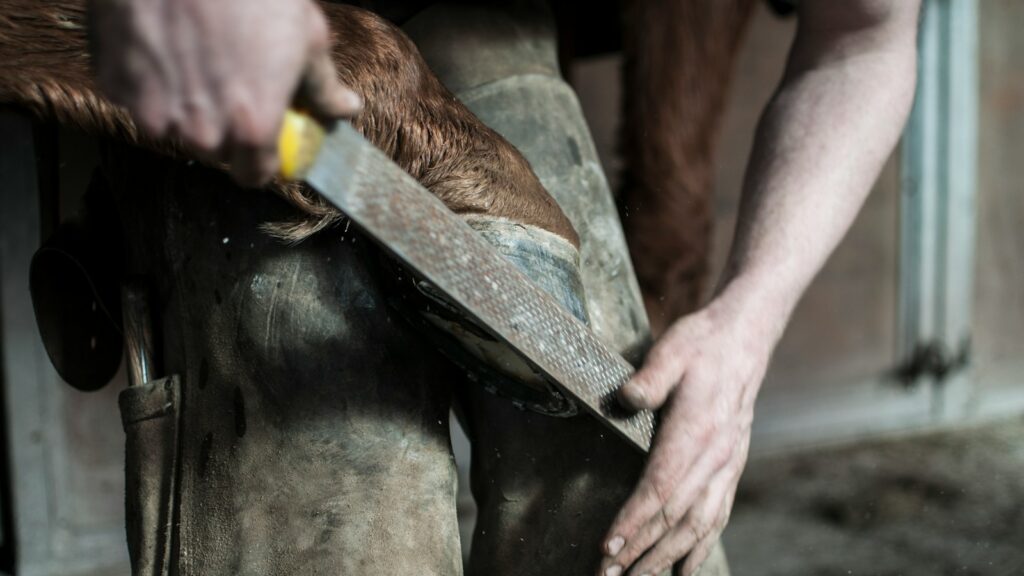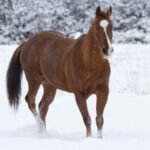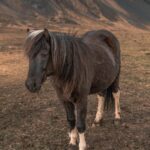Proper hoof care forms the foundation of equine health, yet many horse owners and riders inadvertently make errors when trimming their horses’ hooves. These mistakes, while often made with the best intentions, can lead to serious consequences including lameness, discomfort, and long-term structural damage. Whether you’re a novice who’s just learning about hoof care or an experienced rider looking to refine your approach, understanding these common missteps can help ensure your horse maintains optimal hoof health. In this comprehensive guide, we’ll explore the most frequent hoof trimming errors and provide practical advice on how to avoid them.
Inconsistent Trimming Schedules

One of the most prevalent errors riders make is failing to maintain a consistent hoof trimming schedule. Hooves grow continuously, much like human fingernails, requiring regular maintenance to prevent overgrowth and imbalance. Most horses need trimming every 6-8 weeks, though this can vary based on individual growth rates, environment, and workload. Postponing scheduled trims can lead to excessive growth, causing uneven weight distribution and potential strain on tendons and ligaments. Conversely, trimming too frequently may not allow sufficient growth for proper maintenance and can lead to overly sensitive hooves that are prone to bruising.
DIY Trimming Without Proper Training
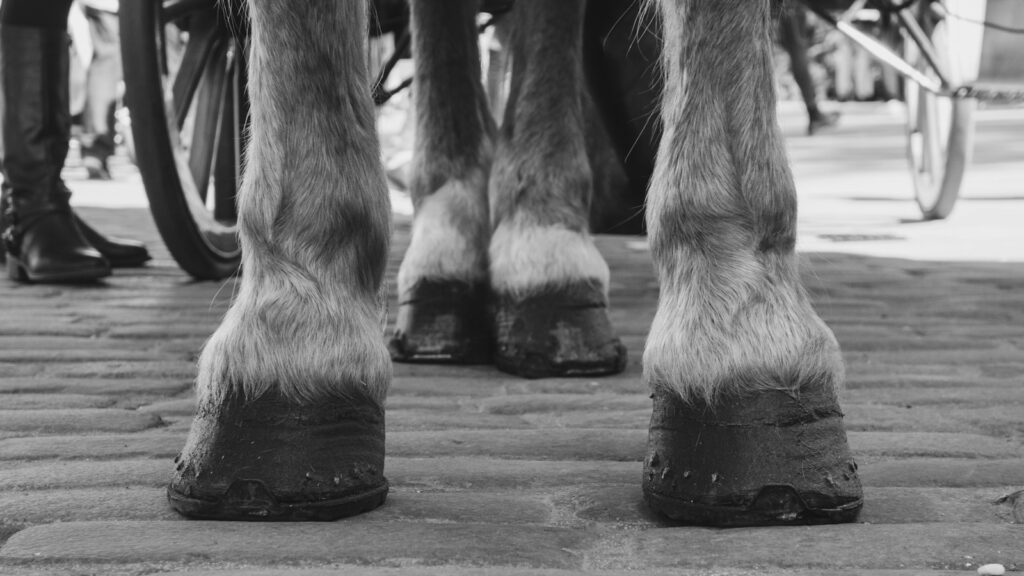
While the desire to save money through DIY trimming is understandable, attempting to trim hooves without adequate knowledge and training represents a significant risk to equine health. Proper hoof trimming requires a thorough understanding of equine anatomy, biomechanics, and the ability to recognize subtle imbalances that may not be apparent to the untrained eye. Amateur trimmers often remove too much hoof wall or sole, fail to address balance issues, or incorrectly angle the hoof, potentially causing immediate pain and long-term structural problems. Before attempting to trim your horse’s hooves yourself, invest in proper education through courses, apprenticeships with experienced farriers, or extensive supervised practice.
Overlooking Individual Hoof Needs
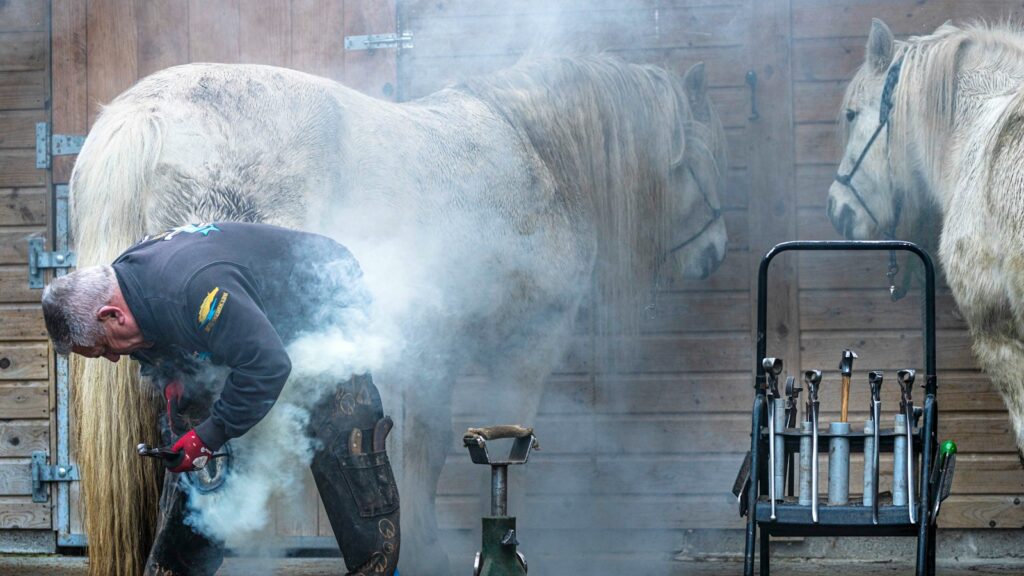
A common mistake among riders is applying a one-size-fits-all approach to hoof trimming rather than addressing each horse’s unique requirements. Different breeds, conformations, and disciplines necessitate specific trimming approaches to optimize performance and prevent injury. For instance, a draft horse with naturally upright hooves needs different trimming than a Thoroughbred with flatter hooves. Similarly, horses with conformational issues such as toeing-in or toeing-out require specialized trimming to mitigate stress on joints and tendons. Environmental factors also play a crucial role – horses in wet conditions may need different consideration than those in dry, rocky terrain.
Excessive Trimming of the Sole

Over-trimming the sole represents a particularly damaging error that can lead to immediate and severe consequences for hoof health. The sole serves as a critical protective barrier between the sensitive inner structures of the hoof and the ground. When too much sole is removed, horses become prone to bruising, abscess formation, and increased sensitivity on hard or rocky surfaces. Many inexperienced trimmers mistakenly believe that a flat, smooth sole is ideal, when in fact a naturally concave sole with adequate thickness provides optimal protection. The frog and bars, which support the heel and distribute weight, are similarly vulnerable to excessive trimming, potentially destabilizing the entire hoof structure.
Ignoring Pastern-Hoof Alignment
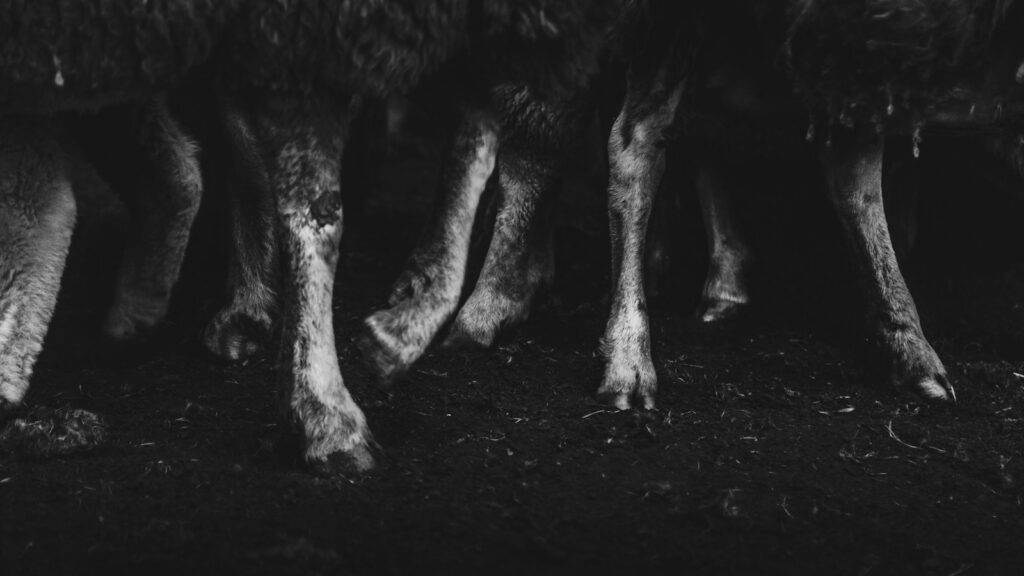
Proper alignment between the pastern and hoof constitutes a fundamental aspect of sound trimming practice, yet it’s frequently overlooked by amateur trimmers. The hoof should follow the same angle as the pastern to ensure proper weight distribution throughout the limb. When this alignment is compromised through incorrect trimming, it places abnormal stress on tendons, ligaments, and joints, potentially leading to conditions like navicular syndrome or coffin bone rotation. Assessment of proper alignment requires viewing the horse from the side while it’s standing squarely on a flat surface. Experienced farriers understand that subtle adjustments to this alignment can significantly impact the horse’s comfort, movement, and long-term soundness.
Creating Excessive Flare

Flaring occurs when the hoof wall grows outward instead of downward, creating an uneven weight-bearing surface that compromises structural integrity. Many inexperienced trimmers fail to properly address flare, either by ignoring it entirely or by removing too much hoof wall at once in an attempt to correct it. Effective flare management requires gradual correction over multiple trimming sessions, focusing on backing up the breakover point appropriately while maintaining adequate hoof wall integrity. Uncorrected flare can lead to cracks, separation of the white line, and increased risk of white line disease or abscesses. Regular, moderate correction of flare supports healthier hoof growth patterns and stronger connection between the hoof wall and underlying structures.
Misunderstanding the Role of the Bars
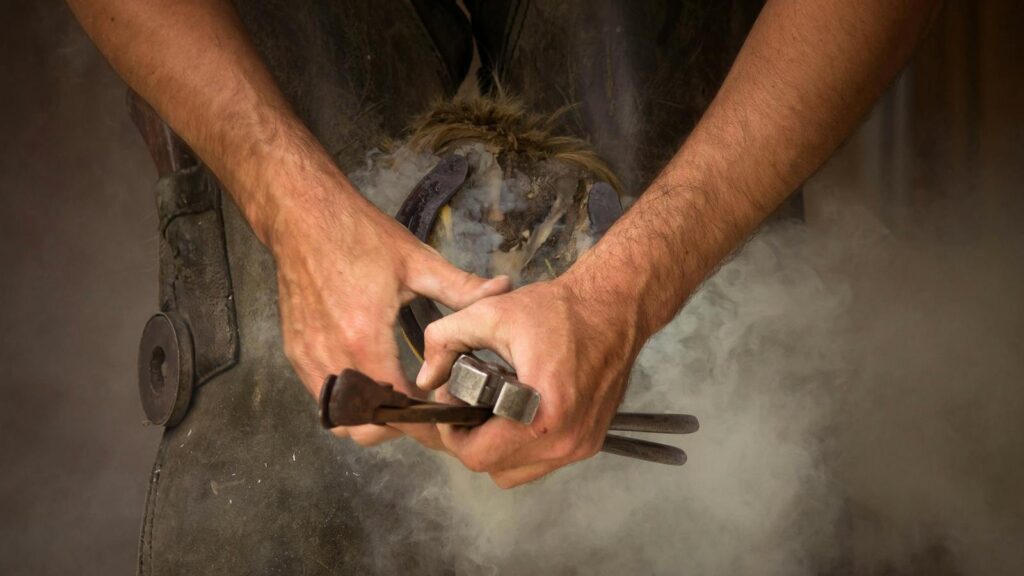
The bars of the hoof—the inward folds of the hoof wall that run alongside the frog—serve crucial structural and supportive functions, yet they’re frequently mishandled during trimming. Over-trimming the bars eliminates their natural supportive function and can contribute to collapsed heels and flat feet over time. Conversely, leaving bars overgrown can create pressure points that lead to bruising or contribute to conditions like corns. Proper bar maintenance involves careful trimming to ensure they remain level with the sole without removing their structural integrity. This requires understanding the fine balance between excessive growth and necessary support—a nuance often missed by inexperienced trimmers.
Incorrect Tool Selection and Maintenance

The quality and maintenance of hoof trimming tools directly impacts trimming outcomes, yet many riders neglect this critical aspect of hoof care. Dull nippers, rasps, or hoof knives not only make trimming more difficult but also increase the risk of tears, uneven cuts, and excessive removal of hoof material. Professional-grade tools, while initially more expensive, provide more precise cuts and last longer when properly maintained. Regular sharpening and cleaning of tools prevents the transfer of bacteria between horses and ensures clean, accurate trimming. The appropriate tool size also matters significantly—using nippers that are too large for a small pony or too small for a draft horse compromises trimming precision and effectiveness.
Neglecting Environmental Adaptation
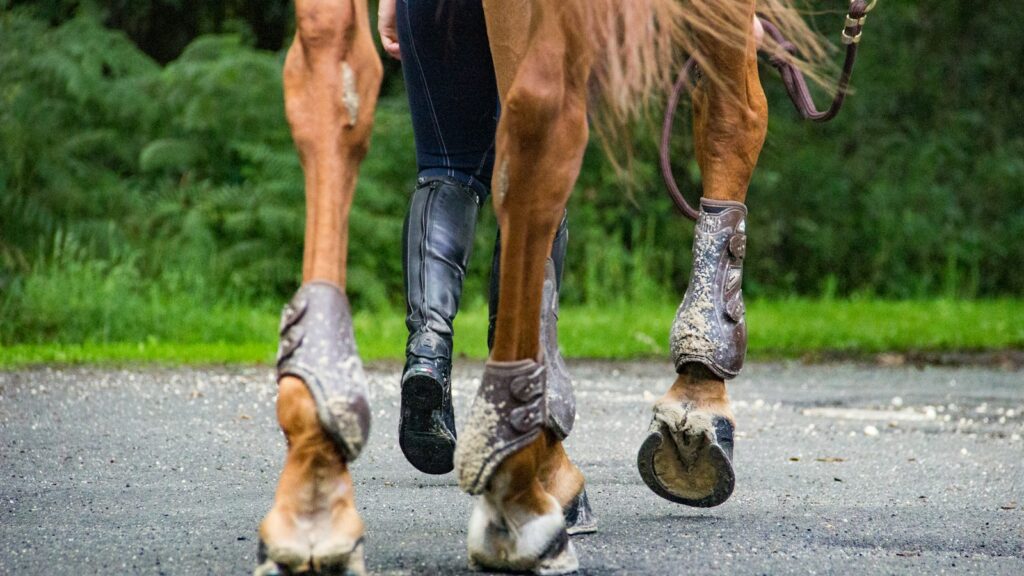
Horses’ hooves adapt to their environment, and trimming approaches should reflect these adaptations rather than working against them. Many riders fail to consider how environmental factors influence hoof health and trimming needs. Horses living in soft, wet conditions typically develop softer hooves that wear differently than those on hard, dry ground. Seasonal changes also affect hoof growth rates and quality, with faster growth typically occurring in spring and summer. When moving horses between different environments, gradual transition in trimming approaches allows the hooves to adapt without causing discomfort or damage. Ignoring these environmental influences can result in trimming that counteracts the horse’s natural adaptations, potentially leading to sensitivity or structural weakness.
Improper Heel Height Management
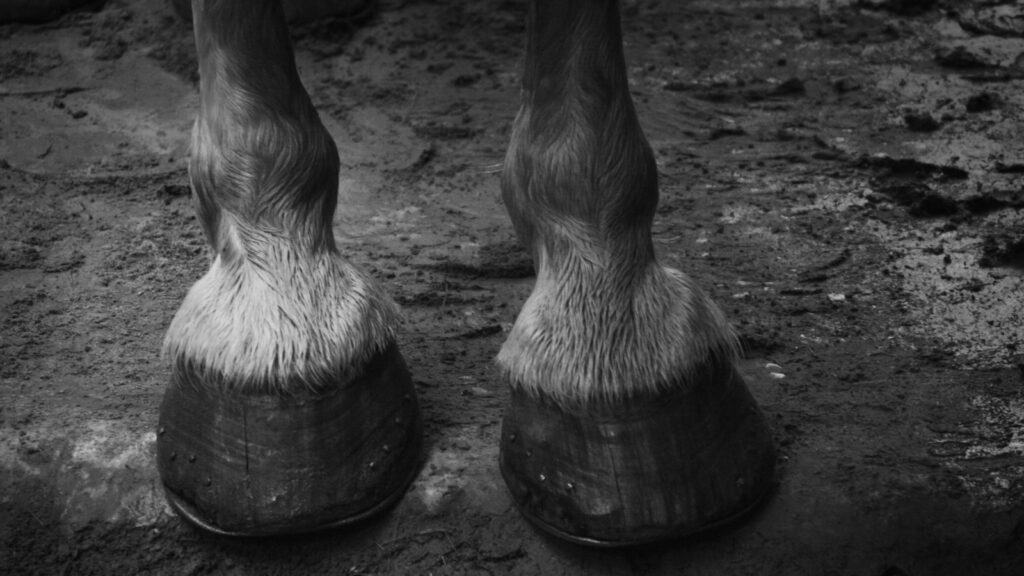
Finding the correct heel height represents one of the most challenging aspects of hoof trimming, with both under-trimming and over-trimming creating significant problems. Leaving heels too high shifts weight forward onto the toe, potentially leading to navicular issues and contracted heels over time. Conversely, trimming heels too low can cause excessive tension on the deep digital flexor tendon and increased concussion on the heel structures. Proper heel trimming maintains the integrity of the hoof capsule while allowing adequate ground contact for support. Assessment of heel height should consider the individual horse’s conformation, movement patterns, and existing hoof condition rather than applying arbitrary standards across all horses.
Failing to Recognize Pathological Conditions
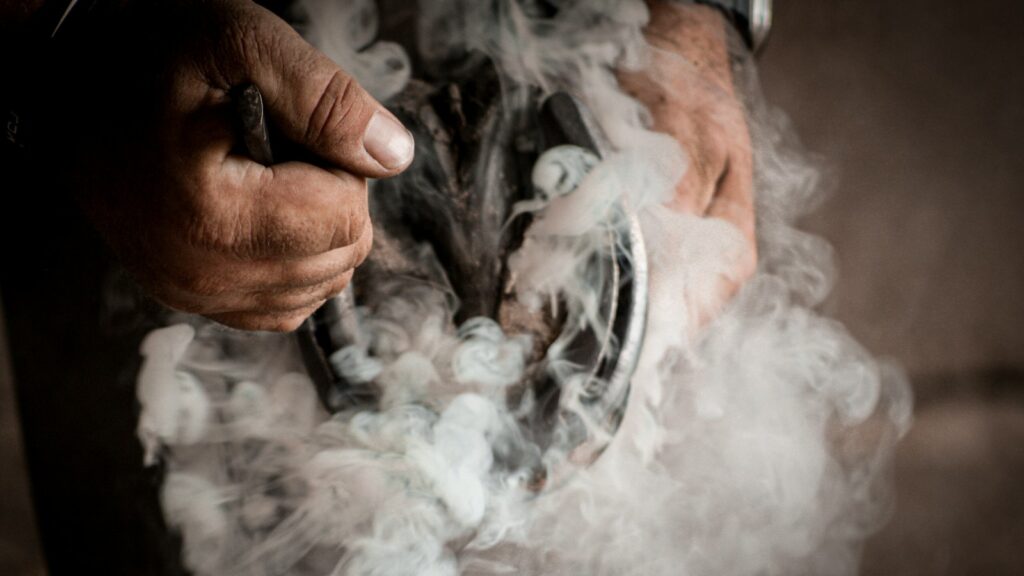
Many riders attempt to trim through or around hoof pathologies without recognizing when veterinary or specialized farrier intervention is necessary. Conditions such as thrush, white line disease, abscesses, or laminitis require specific treatment approaches beyond routine trimming. Trimming a hoof affected by these conditions without addressing the underlying issue can exacerbate the problem and delay healing. Before trimming, a thorough assessment of hoof health should identify any areas of concern that might require professional attention. Recognizing the signs of common hoof pathologies—such as black, malodorous tissue (thrush), separation in the white line, or unusual warmth and digital pulses (laminitis)—enables timely intervention before routine trimming resumes.
Ignoring Whole-Horse Considerations
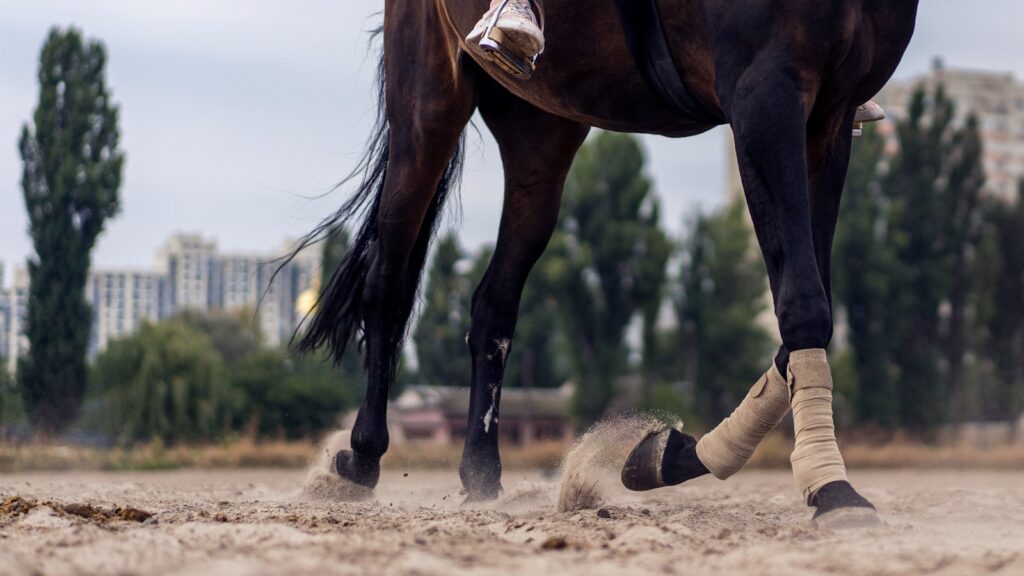
The hoof doesn’t exist in isolation, yet many riders focus exclusively on the hoof without considering how trimming affects the entire horse. Hoof balance and function directly impact joint angles, tendon loading, and overall biomechanics throughout the horse’s body. Changes in trimming can affect movement patterns up the limb and into the back, potentially relieving or creating tension patterns elsewhere in the body. Proper trimming should consider the horse’s overall conformation, discipline, age, and any existing physical issues that might influence how weight is distributed through the limbs. Observing the horse in movement before and after trimming provides valuable feedback about how trimming changes have affected overall comfort and function.
Over-Reliance on Shoes as Solutions
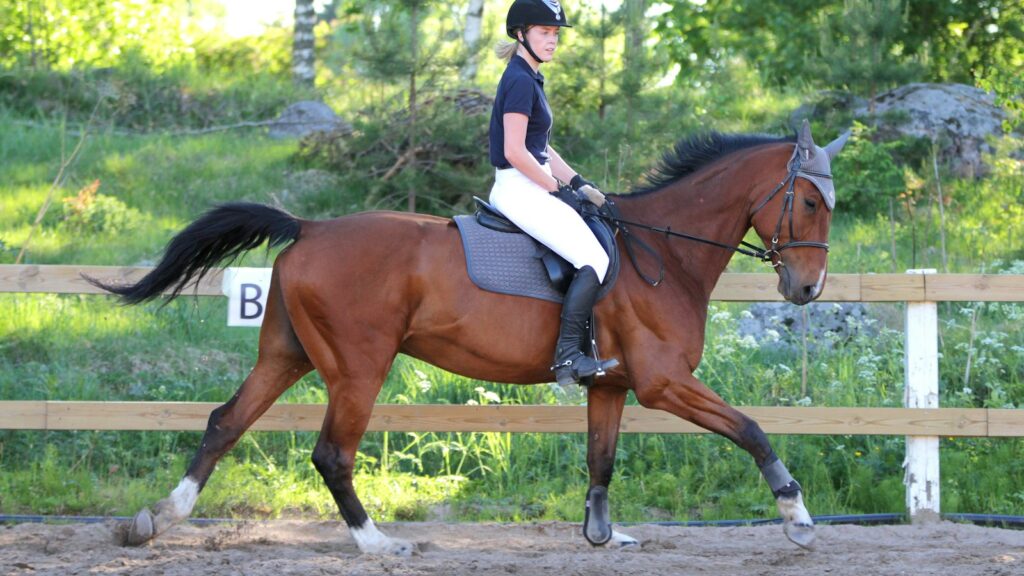
While horseshoes serve important purposes for many horses, some riders rely on shoeing to compensate for inadequate or improper trimming rather than addressing the underlying hoof imbalances. Shoes applied to poorly trimmed hooves merely mask problems temporarily while allowing structural issues to worsen beneath the shoe. Before applying shoes, the hoof should be properly balanced and trimmed to optimal parameters for that individual horse. Even horses that require shoes for protection or performance benefit from periods of barefoot turnout when possible, allowing the hoof mechanism to function naturally and promoting blood circulation. Understanding that shoes supplement rather than replace good hoof care helps riders maintain healthier hooves regardless of whether their horses wear shoes.
Conclusion
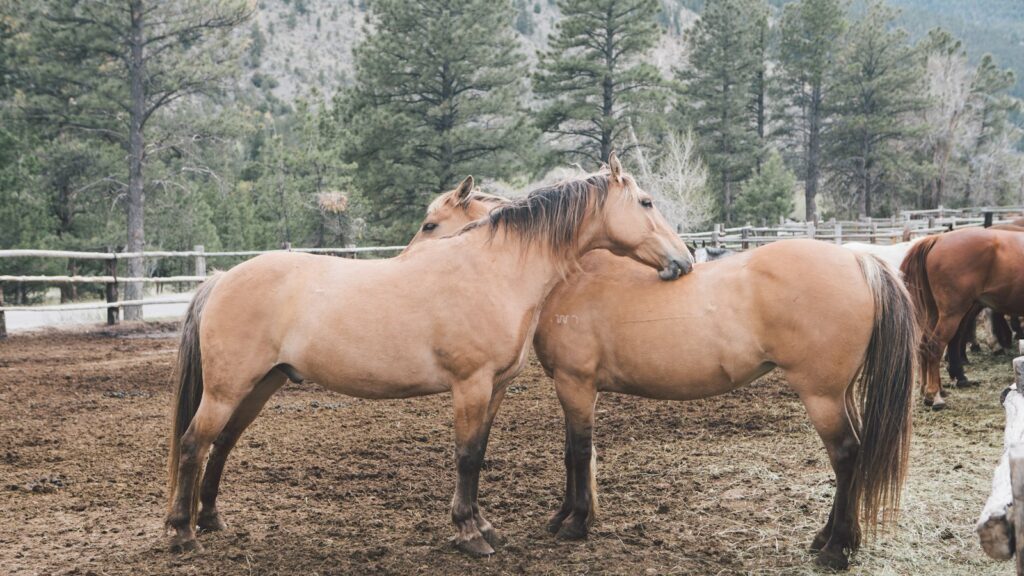
Proper hoof trimming forms the cornerstone of equine soundness and overall health. By recognizing and avoiding these common trimming errors, riders can significantly improve their horses’ comfort, performance, and longevity. While developing hoof care skills takes time and dedication, the investment pays dividends through reduced veterinary costs and improved equine quality of life. When in doubt, consulting with experienced professionals—whether farriers, veterinarians, or hoof care specialists—provides valuable guidance tailored to your horse’s specific needs. Remember that each trimming session offers an opportunity to support your horse’s wellbeing from the ground up, making thoughtful hoof care one of the most important aspects of responsible horse ownership.

